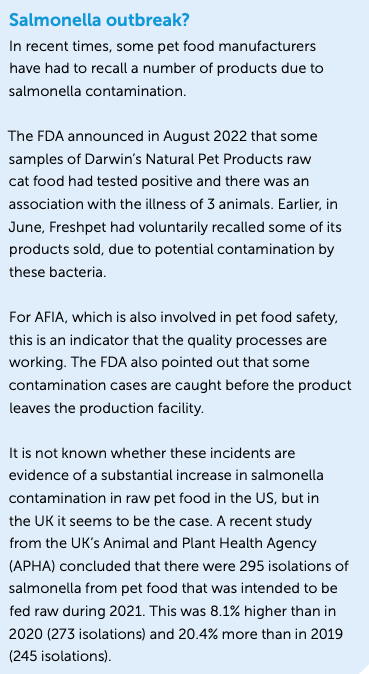Getting the US feed ingredient approval process modernized

The industry is demanding more budget to end long delays in ingredient reviews and wants new marketing claims related to a pet’s well-being to be allowed.
Ingredients used in pet food must be either approved food additives or Generally Recognized As Safe (GRAS) by the US Food and Drug Administration (FDA) at a federal level.
In coordination with state feed control officials, the FDA also recognizes ingredients published in the Official Publication (OP) of the Association of American Feed Control Officials (AAFCO) as being acceptable for use in animal food.
The FDA told PETS International that in the last 3 years it found 18 ingredients acceptable through different petition approvals. “Because some ingredients are reviewed for both animal food and pet food, 9 of those ingredients were available for pet food, with some of those 9 for all animals and some just for dogs and cats,” says a spokesperson.
Taking too long
The industry warns that the approval process takes ‘way too long’. According to the American Feed Industry Association (AFIA), companies have to wait for 3 to 5 years to get new ingredients through the FDA’s ‘rigorous review process’.
“The FDA has indicated to us that this time lag is largely due to insufficient staffing and the need to modernize their databases, and therefore their ability to store and access information,” says Louise Calderwood, AFIA’s Director of Regulatory Affairs.
The Pet Food Institute (PFI) explains that these delays are also impacting negatively on innovation in the industry. “It is critical that the US regulatory framework allows for the timely approval of pet food ingredients that represent the latest in nutrition science,” claims PFI president Dana Brooks.
Funding is key
The feed industry supports an increase in funding to the FDA’s Center for Veterinary Medicine (CVM) to address the time lag issue. “We have a responsibility to submit complete packages to the FDA, but we feel that this review process should be less than 3 years,” adds Calderwood.
In 2020, the FDA received $5 million for this purpose. That allowed them to hire 12 employees, according to AFIA. A source at the federal agency told PETS International that it takes about 3 years for new staff to be fully trained on how to review feed ingredients. “We are starting to see the benefits of those additional hires,” the source adds.
But this still seems to be not enough for the industry, which is asking for more funds to complete the modernization process. Calderwood: “The FDA needs more funding for ingredients review, and more again for pet food. We are a very long way from knowing what, if any, additional funding will be available for FDA this year to address animal food additive petitions.”
If there is any increase in the FDA budget for feed reviews, it is likely to be included in the so-called Omnibus Bill for the fiscal year 2023. But according to insiders, this is not guaranteed, and the US Congress could pass another kind of resolution.
More health-related claims
The industry also wants to update the way companies can apply for approval for new ingredients, and to change the current cap which limits the claims manufacturers can make regarding animal wellness.
Some food ingredients can support all different aspects of an animal’s general health: joints, digestion, eyesight, hearing and cognitive ability. But according to the industry, there is no legal mechanism for a pet food manufacturer to make marketing claims around any of those attributes, despite the science backing this up.
“The goal of pet food manufacturers is to develop recipes that deliver the nutrients our pets need to live long, healthy lives. A timely approval path allows manufacturers to make the latest innovations available to consumers as quickly as possible,” says PFI’s Dana Brooks.
Industry leaders anticipate an increasing number of submissions if and when the modernization finally moves forward. AFIA’s Louise Calderwood predicts that a “significant” increase in FDA staff will be needed to cope with the demand.
Lagging behind
The US feed industry considers the country to be ‘very clearly’ lagging behind in the ability of manufacturers to market products that are proven to be safe and effective to address animal health and well-being.
“That’s certainly very frustrating for our pet owners, and for our pet food manufacturers who want to be producing products to promote longevity and health,” says Louise Calderwood.
According to AFIA, other regulatory jurisdictions such as Europe, Australia, Colombia, Brazil and Thailand are more advanced in their feed revision processes.

